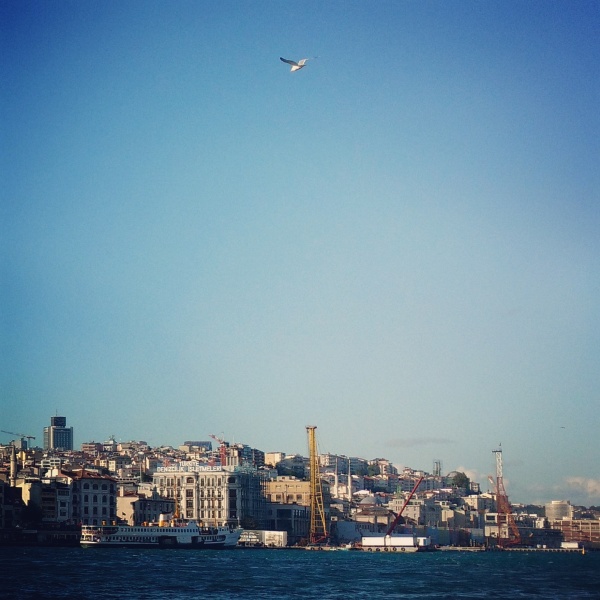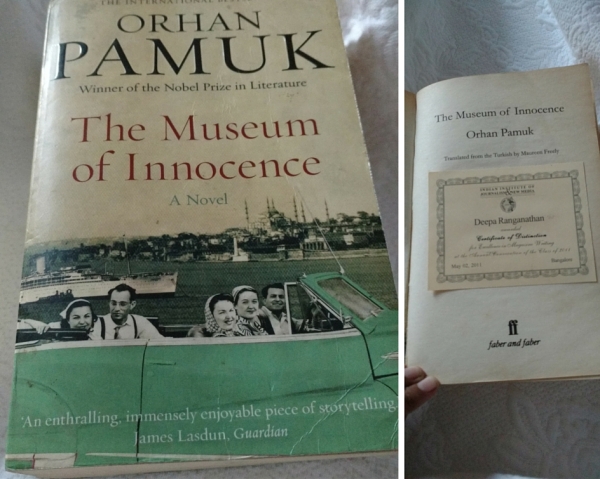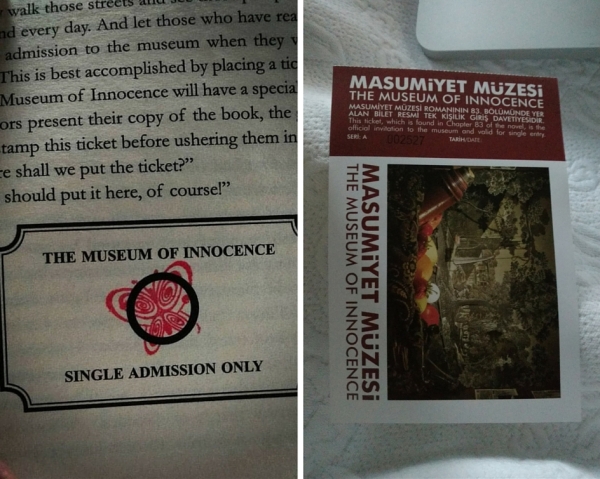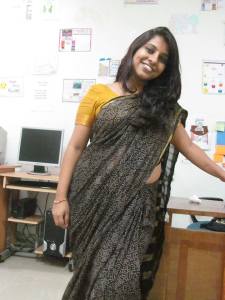It takes a village: A photo essay
…..
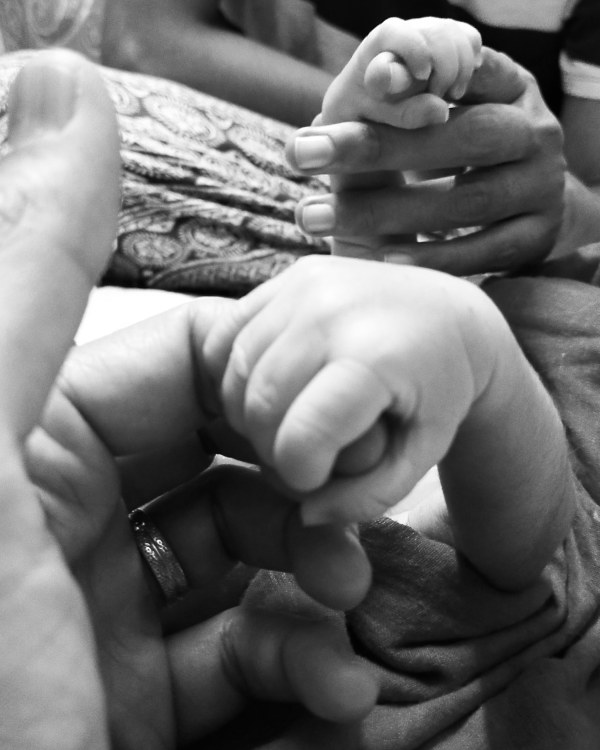
On April 12, 2020, amid intense lockdown, we welcomed Baby Kunzum. He ensured he reaches the world amid an anxious and chaotic time, when people are looking for hope and positivity. We hope he brings that and more. ❤

Pregnancy is a tough job and let no one tell you otherwise. The body is constantly at work, so there’s never an ‘idle’ time even if you are slouching on a couch–there’s a ton of growth happening inside. It affected my moods, my cravings, my appetite, even my attitude and perspective towards life and work, in general. I was simultaneously in awe and in shock with the way my body changed during my pregnancy. In particular, my pregnancy was deeply affected by ongoing events surrounding me, COVID-19 being one of them. In such trying circumstances, there were a bunch of people who stepped up and helped me through. My deepest gratitude to them all. 🌸 This picture was clicked on a memorable rainy day in Bangalore when yellow flowers graced our terrace. It made me very happy. I delivered Kunzum three days later.

The decision to become a parent is a big one, whether you decide to do this alone or share it with a partner. In my case, it was a shared decision with my partner as we recognized our joint need of wanting to become parents. Often, fatherhood isn’t seen beyond the realm and scope of being the breadwinner of the family and being the ‘occasional diaper changer’. Any departure from this stereotypical image and patriarchy will punish, judge or reward you accordingly. For my partner too, the pressures and expectations weren’t any different. He went through his own career ups and downs during the 9 months, while we eagerly awaited the birth of our child and imagined future scenarios and expenses together. As he navigated those moments, while figuring out how he’d fit into the new role as a parent, he remained available and around for every little thing I needed. From fulfilling my mango ice-cream and samosa demands to being the shoulder to cry on, when the mirror didn’t lie to me, I knew who to turn to in moments of oscillating emotions. He was, often, at the receiving end of all my mood swings and I am so deeply grateful for his presence. Then. And now. A day after delivering Kunzum, I looked down at my once-pregnant belly with tears in my eyes, knowing fully well that the baby’s kicks will no longer be felt by me nor seen by him. We hugged closely, as we recalled our own journey–from acquaintances to friends to lovers to partners to spouses. And now, parents for life. I wouldn’t do this, if it weren’t for you, S. You are my village. 💓
..
And, of course, he is holding a melon inside in this picture. 😅
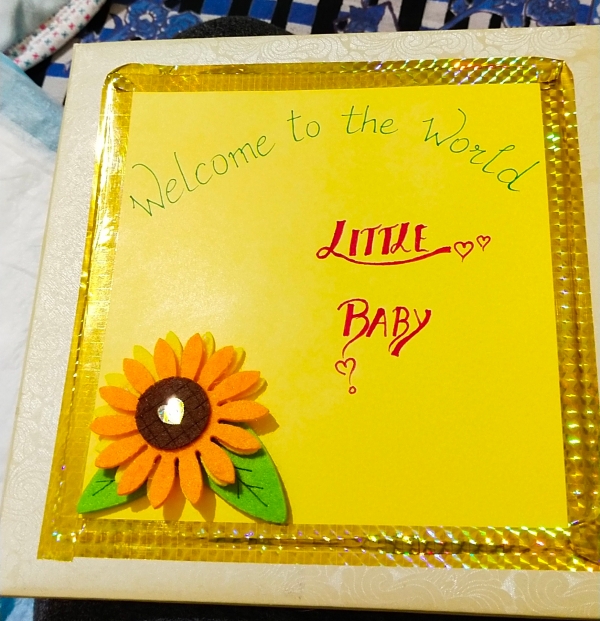
In case no one told you, having a baby (among other things) is an expensive affair. And if you live in a country that doesn’t offer a good, comprehensive, all-inclusive health care (most of us do), you have to figure out how to navigate those large hospital bills, especially if you take the private hospital route for baby delivery (I did). One major lesson we learned during this whole process was to invest in a health insurance that offers maximum coverage for maternity related expenses and work for an organisation that either has tie-ups with good insurance companies or itself offers ample reimbursement. In addition to the doctors, I am especially grateful for the hospital staff (all sisters, nurses, cleaning ladies) that taught me basics of handling newborn, took extra care during COVID times and answered my million questions about nursing and feeding, as a new mom. This picture is of a hand-made card that one of our neighbours gave us when we returned from the hospital. We have never spoken to each other, and yet this small gesture touched our heart. 💓

I didn’t click very many pictures as I became extremely body conscious during those 9 months. I have always been a tall, lean figure; almost always underweight throughout my life. So, on most days, I felt elated to see my body bloat like the way it did—it was kinda nice to see it take a departure from the malnourished structure I’d always been. But on other days, I grew shy, repressed and shrunk to see the rapid changes, especially in the final trimester, when the belly growth was a lot more fast and visible. It made me feel unattractive, ugly and unrelatable. I didn’t even recognize the mirror reflection. Of course, mood variations and pregnancy hormones contributed a lot to the way I felt. One of the most common advise I heard during this time was “Every human body is different. Every pregnancy experience is different. Every baby is different.” Frustratingly vague as it may be, it is the best advise you can get. It really is different and you have to live it to understand and recognize its specific manifestation on you.

I’ll never ever forget the fact that the first time I ever fed my own baby, I had to wear a mask. It is a strange, unprecedented time to be pregnant, to be mothering, to be a parent. Like every other sector and field, this pandemic impacted maternity needs and hospitals gravely too. Given that newborns have increasingly vulnerable immunity, which is still at a nascent stage and being built, I had to take extra precautionary measures to ensure that my baby remains protected and away from any possible suspect, including his own mother. I read somewhere that the first time you breastfeed your baby, you feel an extreme of emotions–either repulsed at doing it or attracted at being able to do it. With a mask on and my stress levels so high because of the circumstances, I didn’t even have time to register my immediate emotions. All I cared about at that moment of time was to make sure he is fed on time, and builds his immunity as soon as he possibly can. For most mothers, babies come to their ward within 24 hours of delivery. For me, it was 72 hours later. I spent all those hours worrying, imagining, thinking, praying, blessing…as I went to the baby to feed him, rather than us being together in the same ward. Nevertheless, he responded to his mom’s touch positively and all I could do was breathe a sigh of relief. Breastfeeding is a two-way process–it’s like two people riding the same bicycle. The rhythm has to be formulated between both the baby and the mother. It takes time, practise, patience, hit and trial method. And many times, it doesn’t even work. It’s also necessary and important to rest the thought that moms who don’t breastfeed are ‘bad’ or those who do it in public are ‘vulgar’ and ‘shameless’. 🖕🏾to them! As a mother, YOU are best equipped to tell what your baby needs, when and where. Period.

I keep wondering how things would have turned out had our baby come at a time when there was no lockdown.
This picture is of a baby bed that my partner bought as a birthday gift to me this year, insisting that this year’s birthday would be my last one sans a baby. Among the many, many old wives’ tales around pregnancy that I heard, one of them was don’t buy baby gifts until the baby arrives–it’s bad luck. 🙄 Nazar lag jayegi. Well, I am so glad that he decided to gift me this because at the moment of his birth, it was literally the only functional baby accessory we had, given that every other baby store is inaccessible and baby clothing is not considered as an essential item. Plus, the baby arrived before time not giving us any time to stock up. I keep browsing through apps and online stores gawking at beautiful baby clothing and onesies with hope in my eyes that one day, I will be able to purchase them. So many of my mommy friends and cousins have amazing clothes and other baby items ready to be passed on to him, but don’t know how to do it, given that national and international shipping is halted at present. They are as frustrated as I am. I recently found a store that was selling leftover stock items of baby clothing by clicking pix of it and sharing it with me on WhatsApp so I could select which ones I wanted to purchase, and then find a pick up and delivery person to get it for me. We finally managed to get him a few basic clothes and swaddle wraps, but what strange times are we living in! It almost makes me chuckle that the first-ever clothing on our baby was actually an old sari of my mother-in-law. Right at birth, our son showed signs of gender fluidity and free clothing expressions. Silver linings!
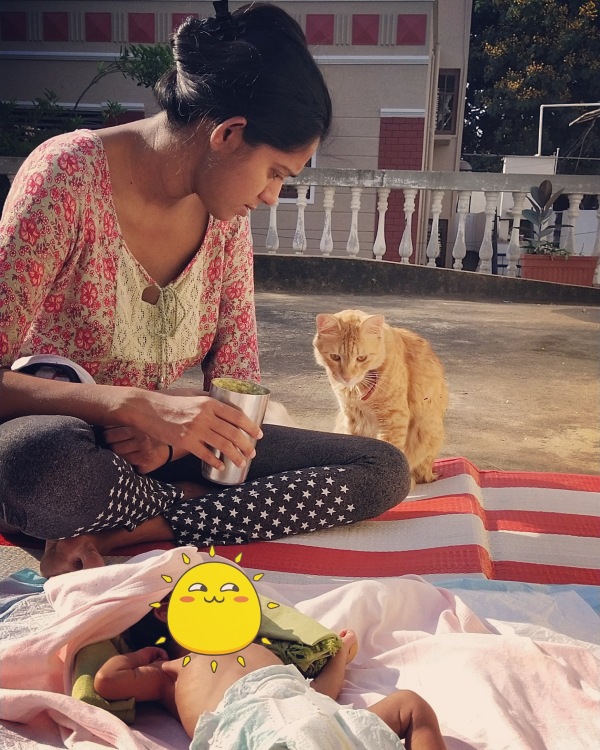
I was a cat mother before I became a mother of a different kind. Many people, especially those who live without pets, often don’t understand the parent-like relationship we have with our animals. But they are no less children than humans to us, and if you live with one, you’d agree. From the beginning, we have been mindful of the fact that Bobby will have to soon learn to coexist with the baby and we will have to figure out ways in which we can facilitate this process. It’s also not something that will happen overnight and will require much resilience and patience. Especially in these Corona times, we are being extra cautious and not letting the two touch or sniff each other for a good 3 months. It’s tough as Bobby is always curious about why my attention has suddenly shifted towards a new human. He is least bothered to make friends with Kunzum. What he is more concerned about is the fact that his mother has divided her attention towards someone else now and that really bugs him. Bobby follows me everywhere I go in the hope that I would bend over, talk to him, listen to his stories. But, unfortunately, until Kunzum is at least 3 months old, my attention has to be only towards the baby at the cost of ignoring Bobby’s meows and calls. 😭 It’s heartbreaking but inescapable. We are really hoping, praying and waiting for Kunzum to grow up gradually and let the animal and human learn to bond with each other, with time.
In this picture, Bobby is trying to make sense of the new life around him on a sunny day on our home’s terrace. 🐈👶

I had an emergency c-section surgery to facilitate the birth of Kunzum. There were several reasons to not go the au natural way for me. Part of it was my own medical history, but part of it was also a hospital conspiracy, IMHO. A surgery means more technical expertise from the hospital, more medicines, more recovery time etc. So, it adds to the hospital bill and benefits the medical community monetarily. Very few people are having natural deliveries these days even if they are able to, thanks to doctors and hospitals insisting on going under the knife. In any case, I had been preparing myself for undergoing a surgery eventually. Any surgery isn’t to be taken lightly, let alone one that is done to help deliver a human life. With anaesthesia and advanced medical equipment and technology, the surgery may not feel as painful at the time of it happening but recovery takes time and can have different affects on different bodies. Right now, my body actually feels like it went through a war, as it survived the surgery so bravely. Given the commonality of caesarean surgeries, people might dismiss your complaints and laments as irrelevant and say “everyone goes through it”. Pay no heed to that. If you have come out of a surgery of any kind, you are bound to take your own time to get back to your normal self. Take all the time you need. Give all the love you can to your body and soul.
In this selfie, I have plaited my hair on my own. 😁 I am also wearing a belt to support tummy tucking postpartum. It takes time and effort, people. Giving birth, no matter what process you go through, is no joke.


